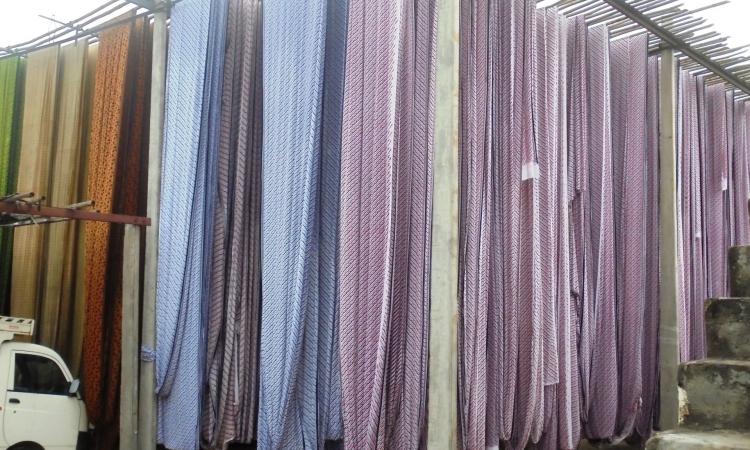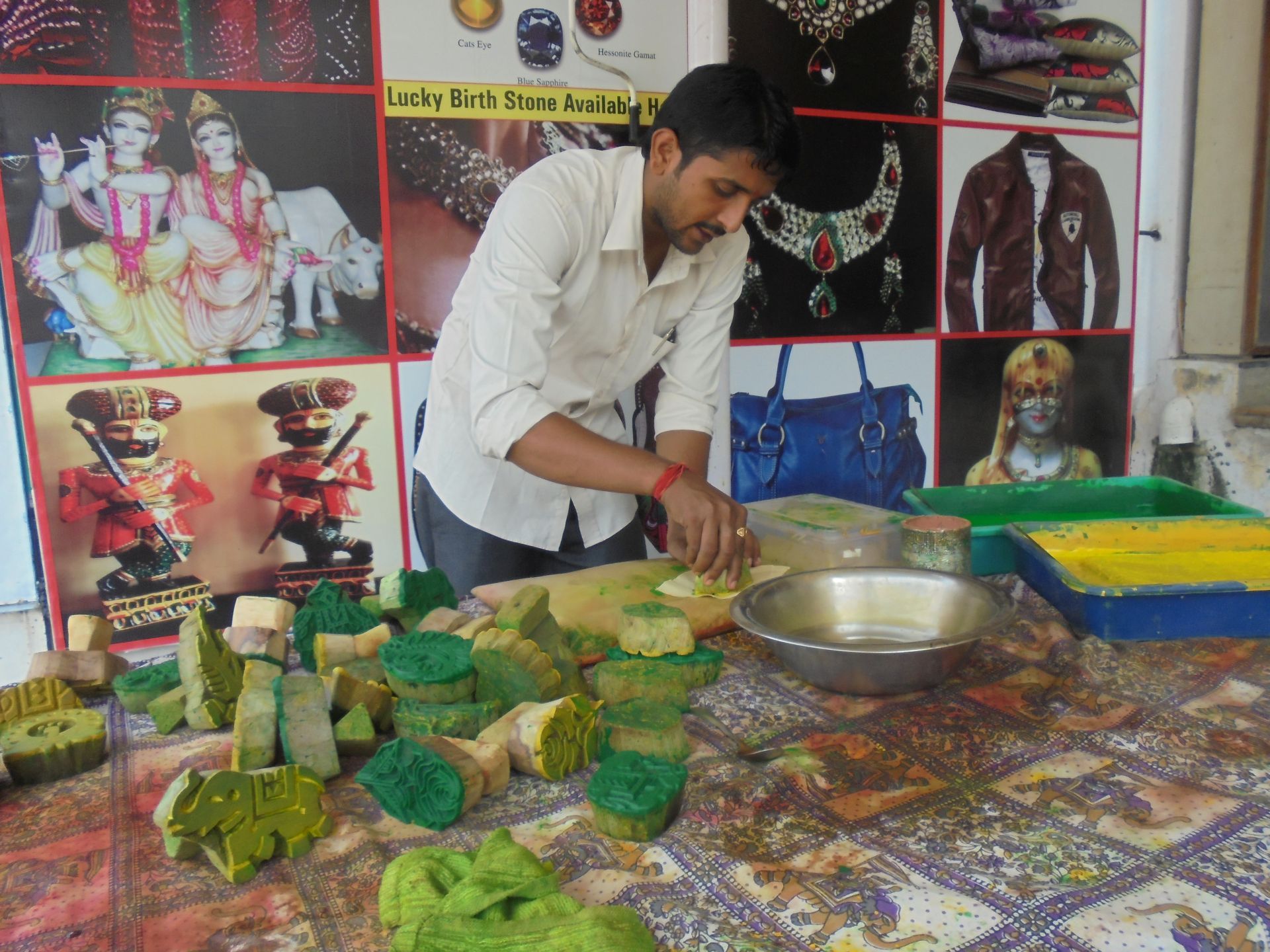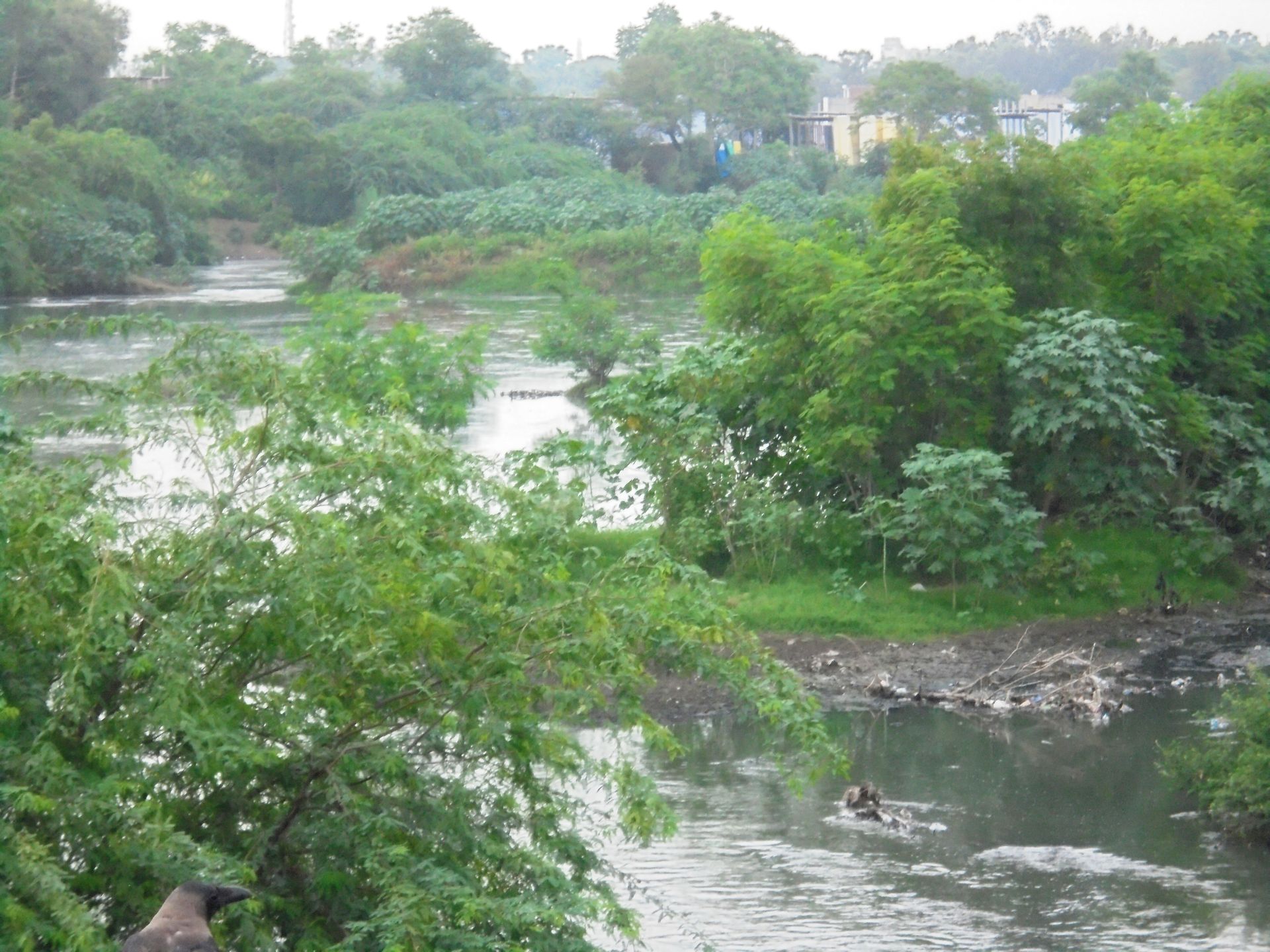
Amanishah nallah flowing through Sanganer, a town located 15 kms from Jaipur, is getting murkier by the day as the the textile hand printing industry in the area is getting more prosperous. The craft of printing colourful ethnic designs on a cotton base using natural vegetable-based dyes is centuries old. An artisan notes, “Fabric from Sanganer was exported to Europe and Africa since the 14th and 15th century AD”. These ethnic designs and the usage of eco friendly dyes are a rage in Western countries and much of the products made here are for export. Apart from this, the industrial cluster also caters to the Indian mass market which consumes utility products such as bedspreads and casual wear dress material from here.
Textile mills pollute the waters
Conventional hand block printing involved printing the impression through small carved wooden blocks onto the fabric, one after the other. This laborious process gave way to screen printing in the 1960s, which tried to piggy back on the reputation of block printing. Screen printing was a cost effective, mechanical and faster way of printing by using synthetic dyes and chemicals for bleaching. “The block printing industry too followed suit in some cases. They also resorted to using synthetic dyes and chemicals”, says Om Prakash who owns a screen printing unit in the area. The effluents from these industrial units were released untreated into the nallahs causing water pollution.
At the beginning of the printing cycle, the fabric is washed by local washerwomen (dhobis) in community washing areas (ghats). “Washing the fabric in the water from the nallahs here gives it amazing shine”, an artisan says.

While there are a few independent units that bleach, dye and calendar, most printers undertake these operations in-house. The fabric is soaked with bleaching powder and other chemicals in large cemented tanks. This is followed by a mechanized method of winch dyeing. Both the processes generate wastewater which is highly toxic.
These units discharge 17-18 million litres (MLD) of untreated chemical water per day into the nallahs which drain into the Dravyawati river. The official figures are a little less--about 12.3 MLD. Studies point to groundwater pollution by textile industries in Sanganer. Random samples collected during different periods of the year from Amanishah nallah and analysed for various physico-chemical parameters and heavy metals indicate that the water is highly polluted.
A lawyer takes up the issue
This prompted a Jaipur based lawyer to file a Public Interest Litigation (PIL) in 1994. The High Court took cognizance, and notices have since been served to the polluting units time and again. So far, the units succeeded in getting a breather in the form of no objection certificates (NOC) from the Rajasthan State Pollution Control Board (RSPCB) or a stay order from the Court.
Textile units served notices in Sanganer yet again
The RSPCB served closure notices to some 893 textile units in Sanganer earlier this year. Despite several reminders, the units failed to install a Common Effluent Treatment Plant (CETP) for treating wastewater because the Textile Unit Owners' Association felt that the cost of about Rs 110-120 crore was too much for the units to bear.
The Rajasthan High Court had directed way back in 2003 that the various parties share the cost of the CETP – 25% by the Central Government, 25% by the State Government and 50% by Textile Unit Owners' Association (Sanganer Rangai Chhapai Association) but this was unacceptable to the Association. It argues, “Since the units are themselves on unauthorised areas devoid of any civic amenities, these ought to be regularised before the units invest in pollution control facilities". For a long while now, the Association has been fighting the legal battle against the RSPCB to avoid the closure of these units.

The Supreme Court had prodded the units to follow the High Court orders. Yet, even after the RSPCB gave the environmental clearance for setting up the CETP plant in 2014, the construction is yet to begin. In a fresh directive in May 2015, the High Court has asked the Power Department and the Public Health Engineering Department to snap electricity and water connections to these units but the concerned departments are yet to implement the court order.
Lingering threat of industry closure
Today, the Sanganer cluster comprising of small firms in the unorganised sector provides employment to almost 10,000 people directly and indirectly. The health of these artisans exposed to polluted waters for extensive periods is at risk. Yet, ensuring a safer working environment in the units has caught nobody’s attention. “Even then, closure of the unit’s operations or relocation is something we fear, our livelihoods being at stake”, says Usman, a block engraver who hails from Farookhabad in Uttar Pradesh.
“In reality, the traditional printers are nothing but job workers for the trader and exporter community”, notes the All India Artisans and Craftworkers Welfare Association, New Delhi. "It is hard for small scale polluters to install pollution control equipment as the small scale of their operations makes the cost of pollution control per unit of output very high as compared to large and medium-scale industries. Incentives are therefore necessary", says Om Prakash, a screen printing unit owner.
Not just the environment but the livelihoods of the artisans and the future of the small scale industry itself is at stake. Instead of waiting for the final judgement, the government and the textile enterprises need to work together towards a way out.